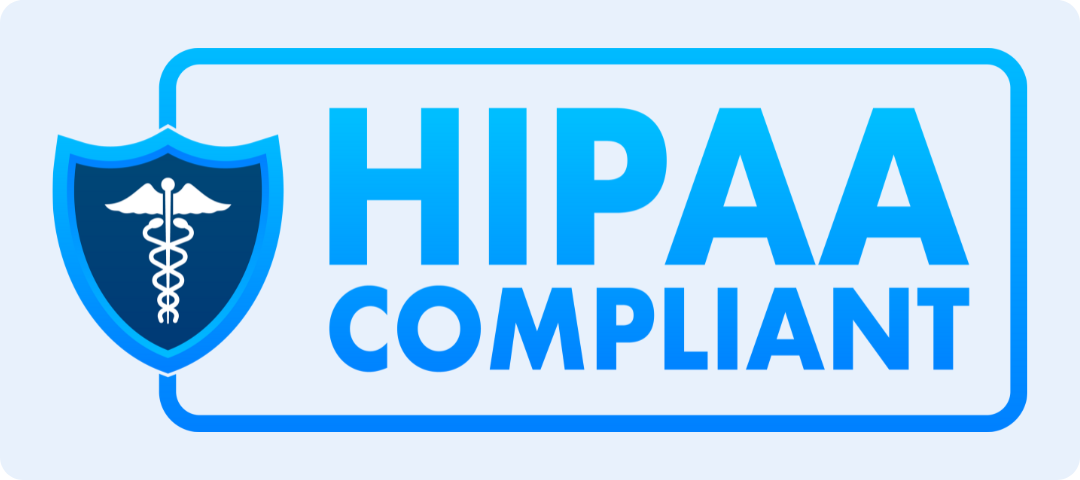27 Aug

This article serves as a guide for dentists, hygienists, and dental office managers on how to create a HIPAA compliant dental insurance verification system. The Health Insurance Portability and Accountability Act (HIPAA) sets the standard for protecting sensitive patient data. All dental practices deal with Protected Health Information (PHI) and Personally Identifiable Information (PII) and must ensure that all the required physical, network, and process security measures are in place and followed.
Understanding Why You Need to be HIPAA Compliant in Dental Practices
Being HIPAA compliant is critical for any dental practice. It involves a comprehensive set of practices to protect patient information from unauthorized access, use, or disclosure. A robust compliant program is a legal requirement and a benchmark for patient trust and professional integrity.
As a dental professional, your patients are putting their trust in you to protect their sensitive health information, meanwhile, you need to be safeguarding your practice from legal and financial risks. HIPAA compliance ensures that you implement necessary security measures to prevent data breaches, avoid costly penalties, and maintain patient confidentiality. It also enhances your practice’s reputation, keeps patient records accurate, and streamlines operations, all while helping you stay competitive in the market. Ultimately, being HIPAA compliant is crucial for delivering high-quality care and ensuring the long-term success of your dental practice.
The Importance of Dental Insurance Verification
Dental insurance verification is the bedrock of a seamless dental care experience. It ensures that both the practice and the patient are aware of the extent of the patient’s benefits and coverage before services are rendered. Consequently, this practice not only streamlines billing procedures but also reduces the risk of unexpected costs for patients and claim denials for the practice. Practices using automated insurance verification tools that can get more than just your standard EDI data can help reduce dental claim denials by as much as 53%!
Steps to Create a HIPAA Compliant Insurance Verification Process
Step 1: Conduct a Risk Assessment
The first step in ensuring your practice is HIPAA compliant for your insurance verification process is to conduct a thorough risk assessment. This analysis helps in identifying potential vulnerabilities in handling PHI and PII during the insurance verification process.
If you are currently are using a call center within your insurance verification process or are considering bringing one into your process, click here to see questions you should be asking to verify if a call center is HIPAA compliant.
Step 2: Develop and Implement Policies
Create detailed policies covering how PHI and PII should be handled during the insurance verification process. These policies must dictate the proper collection, storage, and dissemination of patient data, ensuring it stays within the confines of what is permissible under HIPAA.
You can check The HIPAA Journal for all current and new HIPAA regulations.
Step 3: Train Your Staff
Employees should be educated on the nuances of HIPAA regulations and your practice’s specific policies regarding Protected Health Information (PHI) and Personally Identifiable Information (PII). Regular training sessions can ensure that all staff members are aware of the compliance requirements and the penalties for non-compliance. Ask yourself these questions:
- Does everyone in the office need to be trained?
- How often should they get trained?
- What are some sources/options for training?
- What is the total cost of training?
Step 4: Ensure Secure Communication Channels
When communicating with insurance providers, secure channels must be used. Electronic transmissions of PHI, for instance, should be encrypted, and telephone conversations should take place in private spaces to prevent unauthorized access.
Step 5: Regular Audits
Regular audits and updates of your processes and policies can help you stay compliant with evolving HIPAA regulations. Frequent re-evaluation of your security measures and compliant procedures is key to maintaining a compliant verification process. Click the link below to run through the checklist and see how compliant your practice is.
Best Practices for a Secure Verification Process
- Adopt a Practice Management Software (PMS) that is designed to be compliant with HIPAA and include features like user authentication, access controls, and audit trails.
- Minimize the amount of PHI handled during the verification process to what’s strictly necessary. Automation software can help button this up and prevent PHI from being discussed over the phone.
- Utilize encrypted communication methods when sending patient information to insurance providers, whether via fax, email, or electronic data interchange (EDI).
- Have clear policies for responding to data breaches, including prompt notification procedures as required by HIPAA.
Advantages of a HIPAA Compliant Insurance Verification Software
Implementing such software can keep your practice on the right side of the law and boost efficiency. With a better understanding of their insurance coverage, patients are less likely to be surprised by bills, leading to improved patient satisfaction. Furthermore, a well-oiled verification process minimizes claim rejections and streamlines the revenue cycle of your dental practice, in other words…more money for the practice!
Check out Zuub's HIPAA Compliant Insurance Verification
Related Posts
Recent Posts
Join Thousands Of Happy Providers
Start maximizing your revenue today!
26%
Average increase in practice ‘s productivity
- Increase case acceptance
- 350+ payer integrations
- Collect more, faster
- Reduce A/R costs
- Full automation
- Live customer support
Ready to get started?
Your online account setup only takes minutes. If you have questions, contact us at (213) 645-2813

Support Hours:
6 AM to 5PM (PST)









